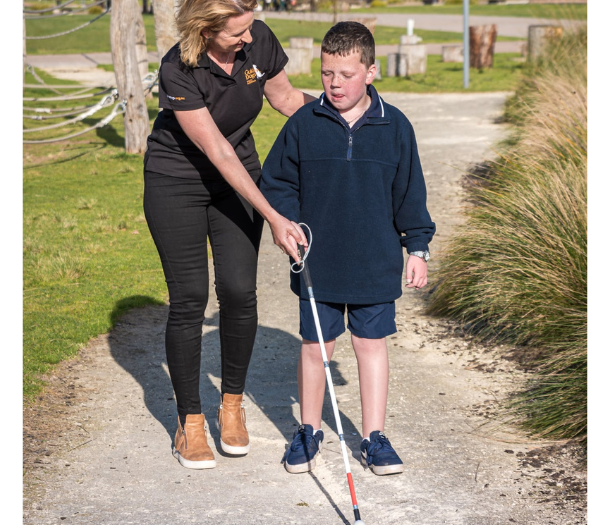International White Cane Day
The majority of Guide Dogs’ Clients use a white cane as their mobility aid. Even Guide Dog Handlers continue to use their white cane in certain circumstances and must have mastered the art of the white or long cane before working with a Guide Dog.
This year our theme for International White Cane Day is ‘Join the Movement’.
We hope you’ll join us to celebrate the work done by Guide Dogs and the achievements of people with low vision or blindness at various levels.
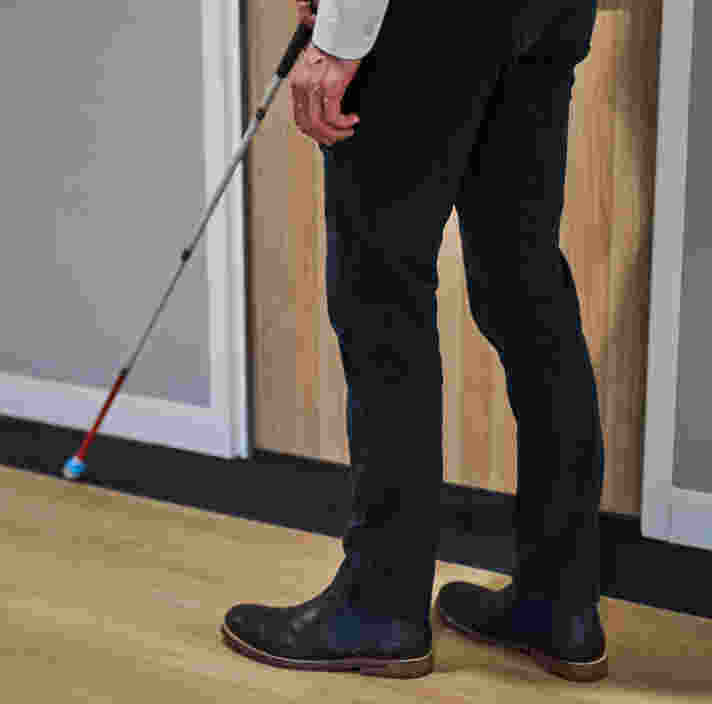
On an individual basis.
Guide Dogs works one on one with Clients to help them achieve the independence and freedom they need to reach their goals. White cane mobility training is a key part of the work we do. Once mastered, a white cane can help people with low vision or blindness continue to move freely though their community. With mobility comes freedom and connection. White canes help keep people moving forward in every sense.
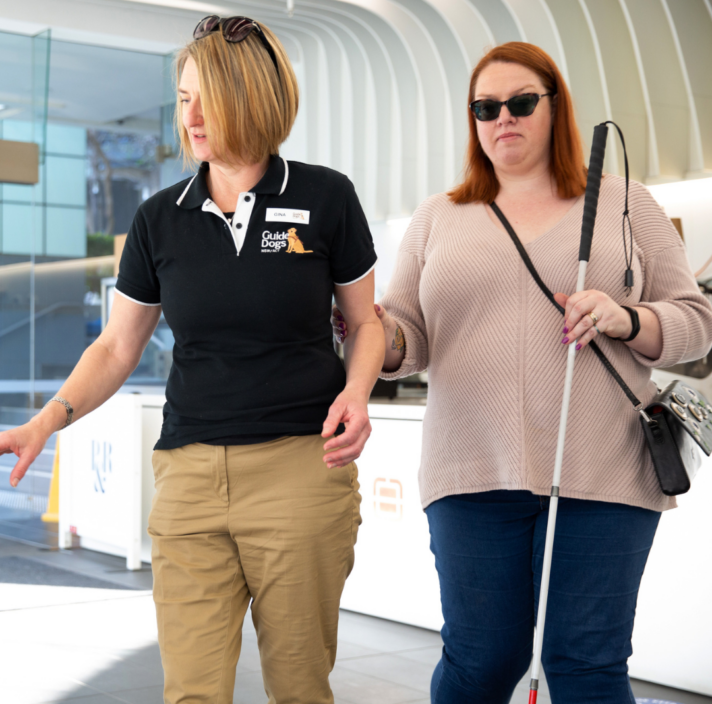
At a community level.
Together with Clients, we work to create change in the community. In previous years, we have used International White Cane Day to highlight the obstacles that white cane users face on a daily basis and educate the community about what they can do to ‘help clear the path’ and create more accessible communities. This means:
Removing physical obstructions.
Over 90% of cane users report meeting obstacles caused by everyday objects which prevent them from moving safely through their world. The biggest problems are; overgrown plants or fallen branches, café tables and chairs, cars parked across driveways, bins left out on footpaths, dumped bikes or scooters. You can play your part by keeping footpaths clear and accessible.
Being aware of the people around you.
Over 70% of white cane users encountered problems with people around them being distracted by their devices. This is becoming the key cause of obstruction for white cane users. You can help keep everyone safe by being aware of your environment and looking up instead of down
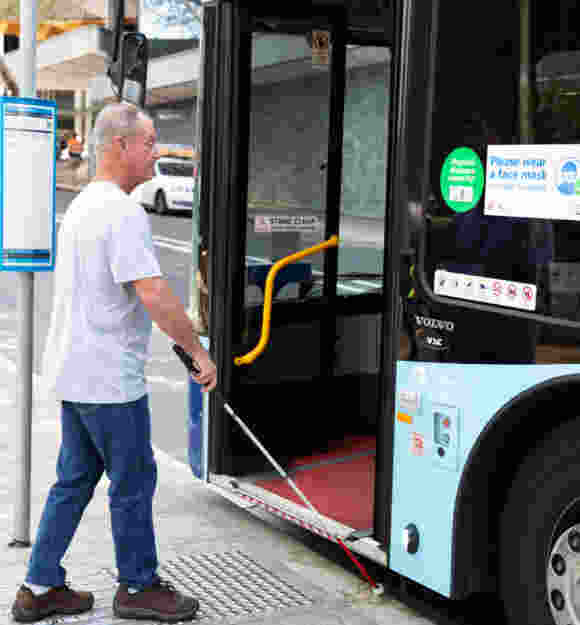
Ask before offering assistance.
White cane users being grabbed by well-meaning people is a regular occurrence. If you think a white cane user may need assistance, the most important thing you can do is to speak first, so the person knows you’re there.
- Approach calmly and introduce yourself. Ask if they need assistance.
- Avoid grabbing or touching the person until they allow you to do so. Unexpected physical contact can be very confronting.
- Allow the person to tell you how they need to be supported. They will be very aware of what they need and will be happy to tell you.
- Most importantly, it’s always good to offer support but never force the issue. Try not to take it personally if the person says no.
Help remove non-physical barriers, such as stigma and discrimination, to allow for better access and inclusion.
While there are plenty of things you can do to help make the world a more accessible place, this doesn’t mean that cane users are limited in what they can do. With safe, obstacle-free communities along with Orientation and Mobility Training and support from Guide Dogs, there is almost nothing cane users can’t achieve.
This International White Cane Day, we hope you’ll ‘Join the Movement’ and help people with low vision or blindness move forward, make progress towards a more accessible world and celebrate the achievements already accomplished.
International White Cane Day - Meet Sam Star
Guide Dogs’ Client Sam Star is a great example of someone who is doing more now that he is legally blind then he did before. Around 15 years ago Sam started having problems with poor night vision, he was diagnosed with Retinitis Pigmentosa and, after years of diminishing sight, last year was classified as legally blind at the age of 68.
Sam started out with an ID cane to indicate to other people that he had low vision. He now uses a graphite cane with different tips depending on what he is doing. He has a marshmallow tip, a ceramic tip and a flat disk for use on sand and snow.
Sam calls himself an adventurer, runner and slalom skier. Most people with low vision of blindness will tell you they can do almost everything they want to do, they just need to find a different way to do it. In Sam’s case, he had to relearn how to run and ski – in totally new ways.
After not skiing for 18 years, Sam wanted to hit the slopes again – this time as someone who can no longer see the runs. Sam now skis as an ‘adaptive skier’. As he can’t see the contours or tracks, he wears a Bluetooth radio headset and his coach provides instructions on where to ski. Sam had always wanted to slalom ski and recently did so as part of the Adaptability Festival in New Zealand.
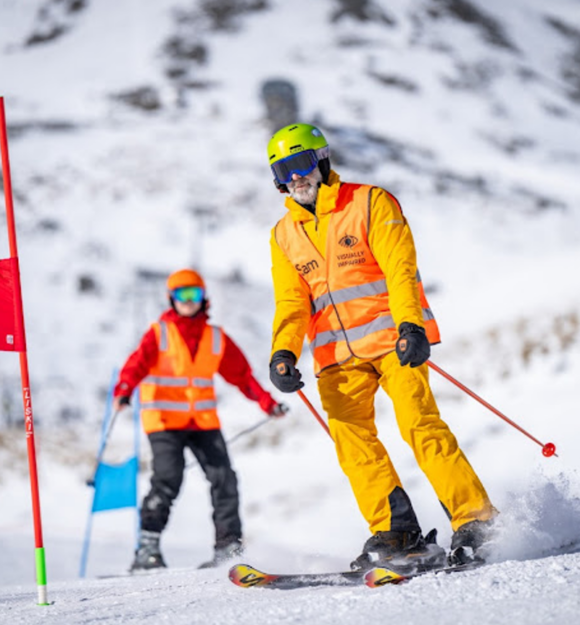
Sam also wanted to get back to running. He joined Achilles, a global organisation that empowers people with disabilities to participate in athletic events such as running, and now runs with a sighted guide using a tether. He has already completed two 10km races and is hoping to be marathon ready by the time he turns 70 next year.
Sam says “skiing and running with limited vision that is like looking through a tiny pin hole is both terrifying and exhilarating. You have to have the right attitude and not let yourself feel diminished. I like to be able to help others by leading through example. I’m now part of a lovely community of skiers and runners which has opened a lot of doors. Like Helen Keller said ‘Life is a daring adventure or nothing at all’.”
Photo thanks to Sam Star and Adaptive Snow Sports.
Did you know?
Pointing. That’s right, we provide directions so often by pointing, we forget that not everyone can see our finger! Clear verbal instructions are the key. You can use a clock direction such as “you’ll find the bread in about eight paces ahead of you at 12 o’clock” or, better yet, “can I help you get to the bread, and how would you like that help?”
Ready to continue?
Seems like you have filled this form earlier. Let’s pick up where you left off.

